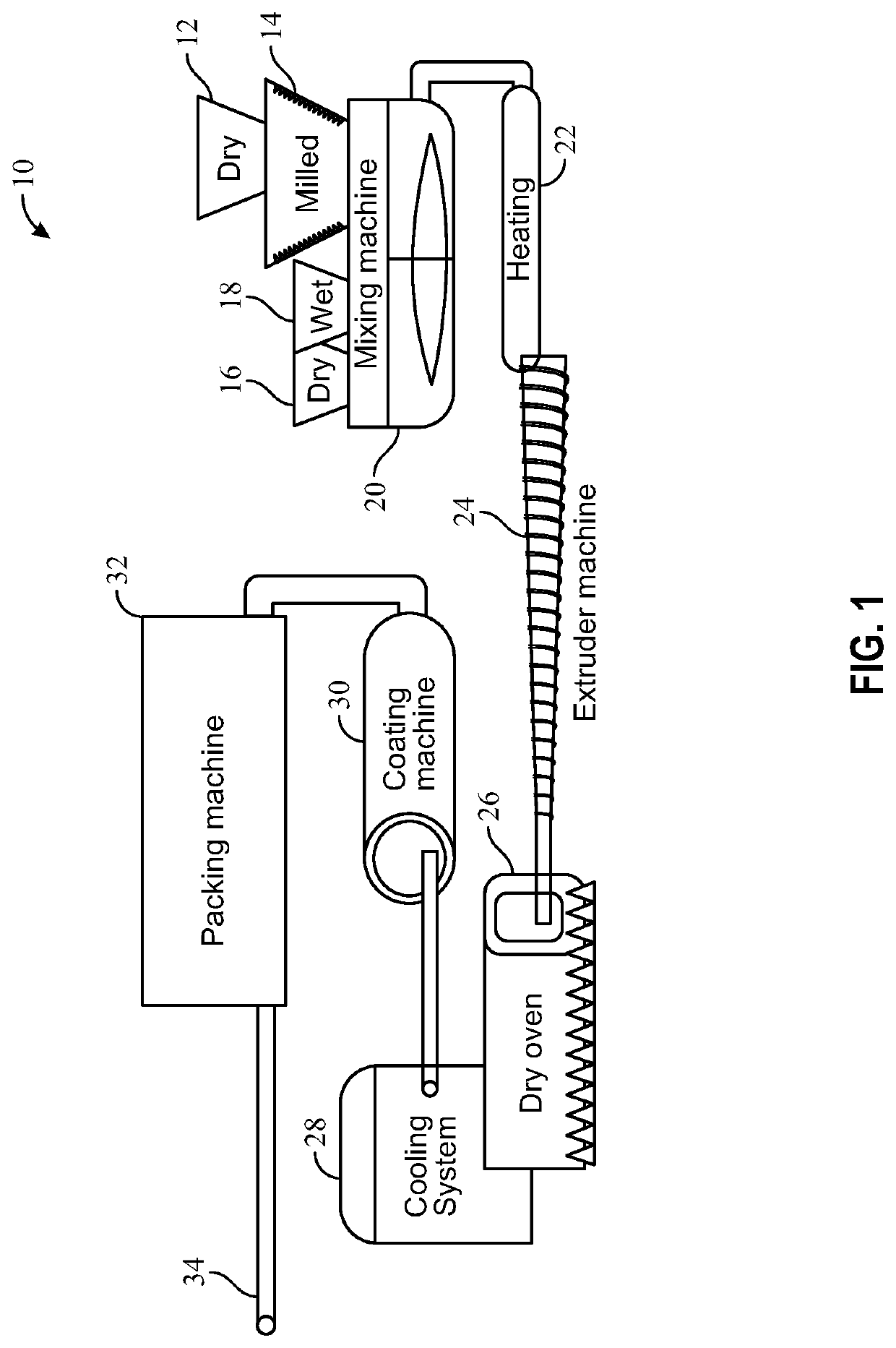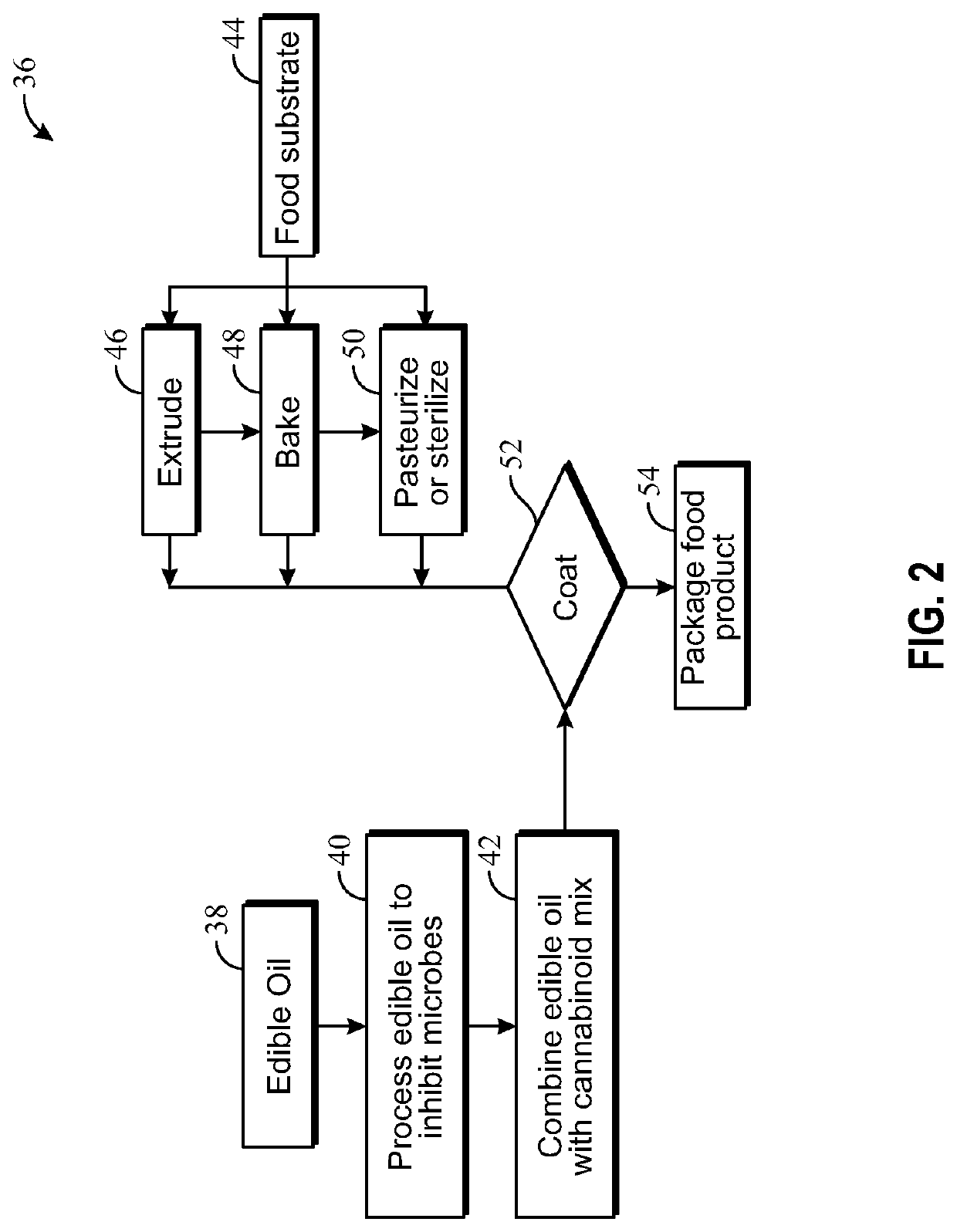Complete animal food having cannabinoids in trace concentrations to avoid toxicity
a cannabinoid and trace concentration technology, applied in the field of complete animal food products containing cannabinoid, can solve the problems of minor cannabinoid whose benefits have not yet been thoroughly studied, high concentrations of toxic chemicals, and increase the amount of cbn in the plant, so as to ensure food safety, optimize the stability of acidic cannabinoid, and inhibit microbial growth
- Summary
- Abstract
- Description
- Claims
- Application Information
AI Technical Summary
Benefits of technology
Problems solved by technology
Method used
Image
Examples
example 1
eding Method
[0111]The Resting Energy Requirement (RER) for an intact adult dog can be calculated by the formula RER=1.8*70(BW)°35 (SACN, p. 61). For a 20-kg dog, this calculation returns a daily caloric requirement of 1162 kcal per day. For a diet containing 3500 kcal / kg, this dog would optimally consume 1162 kcal / day±3500 kcal / kg=0.332 kg / day, or 332 grains of diet per day. If hemp oil is 2% of the diet, the dog would consume 6.64 grams of hemp oil per day, slightly more than one teaspoonful. One study (Holler, 2008) tested 29 hemp-containing samples of which 7 were oils; the highest concentration of THC found was 7.8 μg / g, or 0.00078%. Using this number, the 20-kg dog in the example above consuming 6.64 grams of oil would receive 0.052 mg of THC, or 0.003 mg / kg / day. Studies in humans, either after single or repeated exposure, identified psychotropic effects as a follow up of a single administration at the same lowest effective dose (the lowest dose tested) of 0.04 mg THC / kg BW, wh...
example 2
nine Food Formulation
[0112]
Ingredient: %Chicken meal 0.372 Brown rice 0.19575 Oats 0.090 Barley 0.090 Dried egg 0.08 Beet pulp 0.04 Brewers yeast 0.035 Chicken fat 0.035 Palatant 0.035 Hemp oil 0.02 Salmon Oil 0.0055 Vitamin / mineral 0.00175 Total 1.000
example 3
nine Food Formulation
[0113]
Ingredient: %Chicken meal 0.37 Sweet potato 0.18075 ground peas 0.12 Chickpeas 0.12 Dried egg 0.08 Chicken fat 0.032 Palatant 0.035 Brewers yeast 0.035 Hemp oil 0.02 Salmon Oil 0.0055 Vitamin / mineral 0.00175 Total 1.000
PUM
| Property | Measurement | Unit |
|---|---|---|
| Fraction | aaaaa | aaaaa |
| Fraction | aaaaa | aaaaa |
| Fraction | aaaaa | aaaaa |
Abstract
Description
Claims
Application Information
 Login to View More
Login to View More - R&D
- Intellectual Property
- Life Sciences
- Materials
- Tech Scout
- Unparalleled Data Quality
- Higher Quality Content
- 60% Fewer Hallucinations
Browse by: Latest US Patents, China's latest patents, Technical Efficacy Thesaurus, Application Domain, Technology Topic, Popular Technical Reports.
© 2025 PatSnap. All rights reserved.Legal|Privacy policy|Modern Slavery Act Transparency Statement|Sitemap|About US| Contact US: help@patsnap.com


